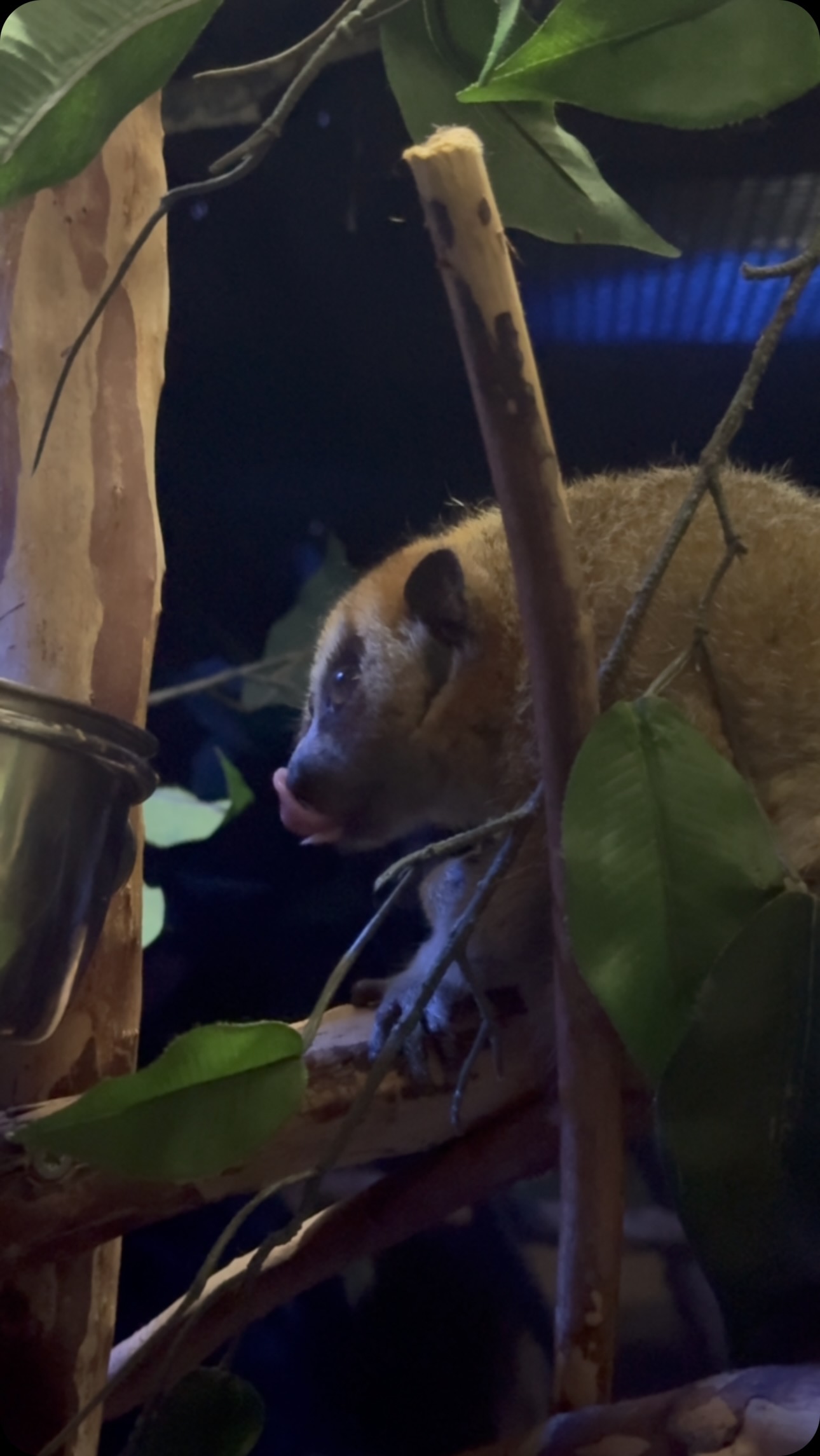- Introduction to Gizmo, the pygmy slow loris.
- Details on the significance of pygmy slow lorises in zoology and conservation.
- Insights into Gizmo’s adaptation and behaviors in a controlled environment.
- Educational information on slow loris habitats, diets, and social behaviors.
- Role of zoos in conserving endangered species like the pygmy slow loris.
Gizmo, the pygmy slow loris, has captured the hearts of many with his endearing presence. For two weeks, he has been on exhibit, showcasing his formidable resilience and the critical role zoos play in wildlife conservation and education. He has quickly become a visitor’s favorite, delighting them with his nocturnal antics and tender interactions with his plush toy.
The pygmy slow loris (Nycticebus pygmaeus) is a small, nocturnal primate native to the forests of Vietnam, Laos, Cambodia, and China. It belongs to the Lorisidae family and is distinguished by its reduced limbs and large, forward-facing eyes. These physical traits are adaptations for its arboreal lifestyle and hunting under low-light conditions. The species, listed as “Vulnerable” on the IUCN Red List, faces several threats, including habitat loss, fragmentation, and illegal wildlife trade.
Gizmo’s exhibit is a microcosm of his natural habitat, featuring elements replicating the dense canopy forests where these animals naturally dwell. Zoos aim to minimize stress and encourage natural behaviors by providing such an environment. Over the past two weeks, Gizmo has exhibited increased confidence, exploring his surroundings, indulging in his favorite “midnight” snacks, and acclimating to the presence of visitors. His willingness to adapt reflects his inherent resilience and the careful planning by the zoo staff to create a conducive environment.
In captivity, slow lorises like Gizmo receive specialized care miming their natural diet, predominantly of insects, fruits, and plant exudates. Their slow metabolism and unique dietary needs require precise nutritional planning. Captive diets often include crickets, mealworms, and a variety of fruits to ensure balanced nutrition. After intense foraging activities, seeing Gizmo retreat to his plushie, which provides comfort like objects used in enrichment programs, is heartwarming. It highlights the importance of psychological well-being alongside physical health.
Understanding the social behaviors and interaction patterns of the pygmy slow loris is pivotal. In the wild, they are generally solitary but come together during mating. Their communication is largely vocal and olfactory, marking territories using glandular secretions. By studying these behaviors in a controlled setting, zoologists gather valuable data on the species’ social structures, feeding habits, and reproductive cycles. This information is critical for developing breeding programs aimed at sustaining the population.
Zoos play an instrumental role in the conservation of slow lorises. Beyond providing a secure sanctuary, zoos engage in extensive research, captive breeding, and public education initiatives. The presence of animals like Gizmo in a zoological setting offers unique opportunities for direct public engagement and raises awareness about the species’ plight.
Gizmo’s time on exhibit brings visitors joy and bridges the gap between the public and the conservation efforts for endangered species. By facilitating up-close encounters, zoos foster a deeper understanding and appreciation for the intricate nuances of various species, promoting an ethos of wildlife conservation.
Gizmo continues to be an ambassador for his species, embodying the resilience and adaptability required for survival. His journey is a testament to the complexities of wildlife management and conservation. Visitors who have had the chance to meet him are not just witnessing a zoological exhibit but engaging with a broader narrative that underscores the importance of preserving biodiversity.
The pygmy slow loris in zoos contributes to a multifaceted educational experience. It underscores institutions’ critical role in research, conservation, and fostering a connection between the public and wildlife. Gizmo’s exhibit is more than just an attraction; it is a crucial tool in the broader conservation framework designed to preserve endangered species for future generations.
In summary, Gizmo’s presence at the exhibit highlights the intersection of animal care, scientific research, and public education. His story and the meticulous efforts behind his care provide a window into the world of pygmy slow lorises and underscore the vital role of zoos in wildlife conservation. Visitors gain invaluable insights into the natural world through these exhibits, fostering a community of conservationists dedicated to preserving our planet’s rich biodiversity.
*****
Source Description
He’s a big strong boy! 🥰🥹 Gizmo has been on exhibit for two weeks now, and he’s been so brave exploring all on his own! Check out some of these absolute highlights of our pygmy slow loris buddy. Of course, he’s snuck in some “midnight” snacks and brought his favorite plushie with him as well. He’s loved meeting all our guests that have stopped by. Make sure to go give Gizmo some love today! ❤️
🎥 Keeper AJ


